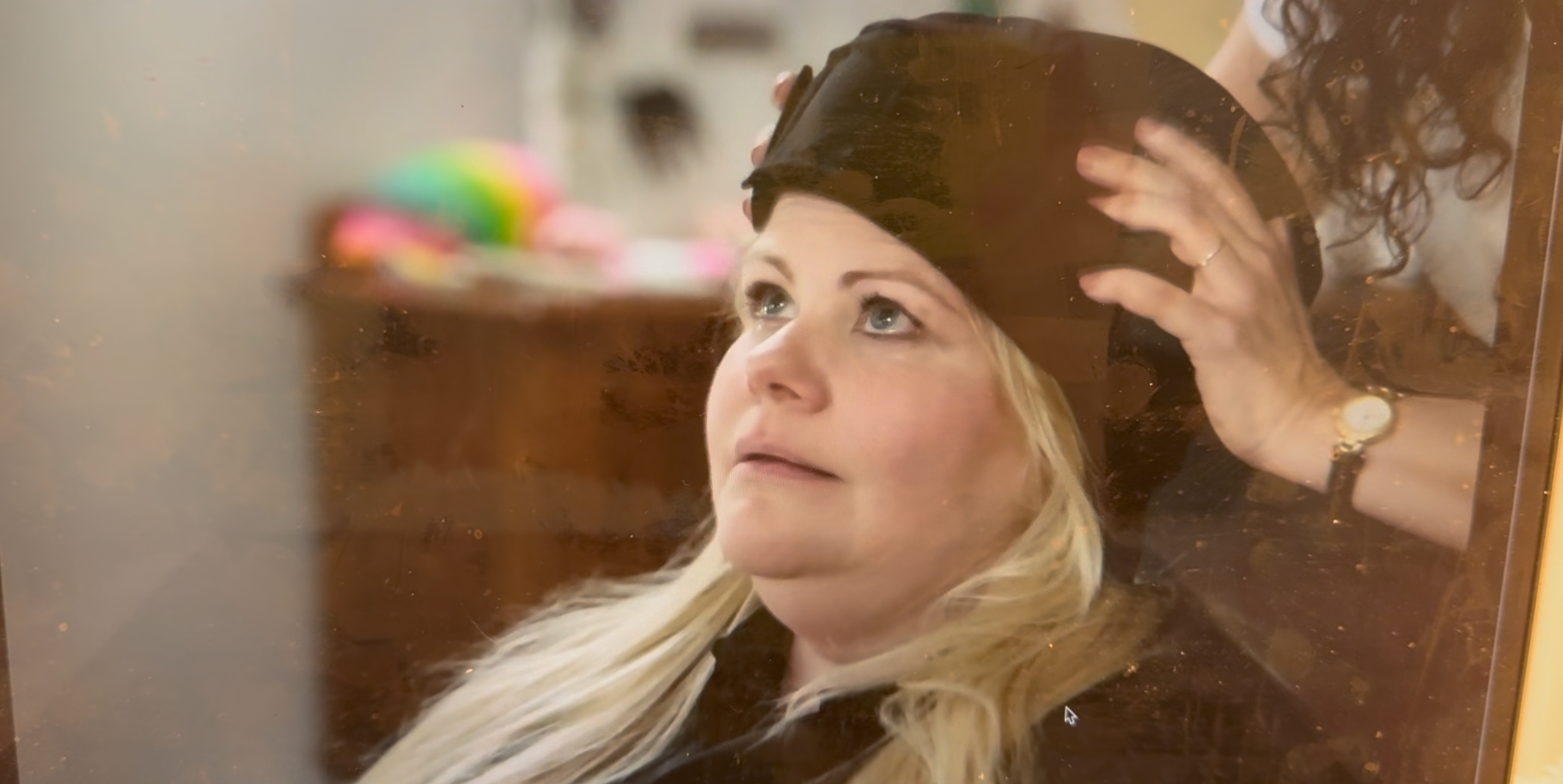Spotlight on the use of cold cap therapy on STAT (Radio-Canada) | Keeping your hair during chemotherapy: yes, it’s possible!
Published on 2024-10-13 (Updated on 2025-04-06)
Following the broadcast of an episode of the fiction series STAT on Radio-Canada on Thursday, October 10, 2024, the Garde tes cheveux Foundation would like to express its sincere gratitude to Aetios Productions for helping raise awareness among Quebecers about the option of scalp cooling during chemotherapy. While cold cap therapy may not be suitable for everyone, it is essential that every patient has access to this information in order to make a fully informed choice. The Foundation would also like to clarify certain facts for the benefit of Quebec patients wishing to preserve their hair during chemotherapy, to ensure that accurate and realistic information is shared.
Garde tes cheveux Foundation
Garde tes cheveux Foundation is a registered, independent Quebec charitable organization whose mission is to inform and support chemotherapy patients who wish to preserve their hair during treatment. The Foundation also aims to educate and train clinicians across Quebec on this method. Garde tes cheveux is a recognized partner of several leading organizations, including the Quebec Breast Cancer Foundation, the Quebec Cancer Foundation, Virage Foundation (CHUM), and the Canadian Cancer Society. It is also a member of the Quebec Coalition of Community Oncology Organizations. [https://gardetescheveux.org/a-propos/](Learn more.)
“It is crucial to inform and educate patients about the options available to them. Clinicians must also be trained to provide accurate and truthful information to patients. This is a major issue in Quebec.”
- Me Sophie Truesdell-Ménard, President and Founder of the Garde tes cheveux Foundation (gardetescheveux.org)
The method: principle of vasoconstriction
The cold cap method involves wearing caps that cool the scalp before, during, and after chemotherapy administration. The cap works based on a well-known and straightforward principle: vasoconstriction. This proven technique, used in Europe for nearly 30 years, is gradually making its way into Quebec. [https://gardetescheveux.org/la-methode/](Lean more.)
The patient is 100% autonomous.
- The Garde tes cheveux Foundation would like to remind the public that STAT is a fictional series. The types of cold caps shown in the scenes featuring Isabelle, the character in the show, were created exclusively as props for filming. These models do not exist and are not available in Canada.
- Manual cold caps can be used throughout Quebec in all hospitals and medical facilities — both public and private.
- The rental of manual cold caps is managed directly by the patients; healthcare staff are not responsible for ordering or handling the equipment.
- Some hospitals in Quebec offer cold caps free of charge (through their foundations) in limited quantities — including Saint-Sacrement, LeGardeur, and Gatineau. These hospitals handle the installation and changing of the caps, making the treatment process easier for patients. It’s important to note that Gatineau is the only hospital in Quebec that offers the fixed system, and this is subject to availability and functionality. For this reason, many patients choose to rent manual cold caps as a complement to ensure optimal and uninterrupted use. [https://gardetescheveux.org/la-methode/](Learn more about the pros and cons of each type of cold cap.)
- A Canadian-based provider, [https://www.penguincoldcaps.ca/](Penguin Cold Caps), offers rental services with fast delivery across Quebec within 24 to 48 hours. They also provide customer service in French.
- The use of dry ice is essential for the proper functioning of the manual cold cap method. The Garde tes cheveux Foundation has established an agreement with Linde Canada to make dry ice available at a preferential rate.
- Although not covered by the RAMQ, cold caps are a recognized medical expense and may be eligible for tax deductions. Some private insurance companies also cover the method, allowing the beneficiary to choose between a wig and the use of cold caps.
- The Garde tes cheveux Foundation is actively working to create financial support programs through contributions from both public and private donors. A first financial assistance program for patients was launched in October 2024, [https://gardetescheveux.org/faq-soutien/en-savoir-plus-sur-le-programme-de-soutien-financier-safir/](thanks to a partnership with the Jean Marc Paquette Foundation and the SAFIR program).
The cold cap method works.
- A person using cold caps never becomes completely bald. The follicle-preservation method, based on vasoconstriction, helps protect hair follicles, promoting healthier regrowth and reducing the risk of permanent alopecia — particularly with Taxotere (docetaxel). Permanent hair loss is a very real risk, and one that is often not communicated by healthcare professionals.
- While scalp cooling helps preserve hair, it does not guarantee total preservation. Even when following an effective protocol, mild to significant hair loss may occur — though it often goes unnoticed by others. Cold caps, however, have a satisfaction rate of 85%, allowing many users to maintain their daily lives without visible signs of hair loss. Shedding may appear as overall volume reduction or be localized (around the ears or nape of the neck). No user becomes completely bald when the protocol is followed correctly. For more information on hospital support and key success factors, please visit our FAQ: [https://gardetescheveux.org/faq-accompagnement/pourquoi-les-hopitaux-n-offrent-pas-tous-la-possibilite-dutiliser-les-casques-au-quebec/](Why don’t all hospitals offer cold caps in Quebec)?
Proper temperature control of the caps
- The Garde tes cheveux Foundation reminds users that manual cold caps must be changed every 20 to 25 minutes to maintain a temperature between -28°C and -35°C, as recommended by the protocol.
- The caps must be worn 50 minutes before the start of the infusion, during the infusion, and for 3 to 5 hours after the infusion.
- Patients do not stay longer at the hospital; they simply continue rotating the three caps at home, in the comfort of their own surroundings.
A media consultation service offered by the Garde tes cheveux Foundation
The Garde tes cheveux Foundation is available to collaborate with production teams to ensure scenes are accurate and realistic. It is also happy to answer questions from journalists to help ensure published articles are accurate, informative, and beneficial to readers. Contact us: info@gardetescheveux.org

